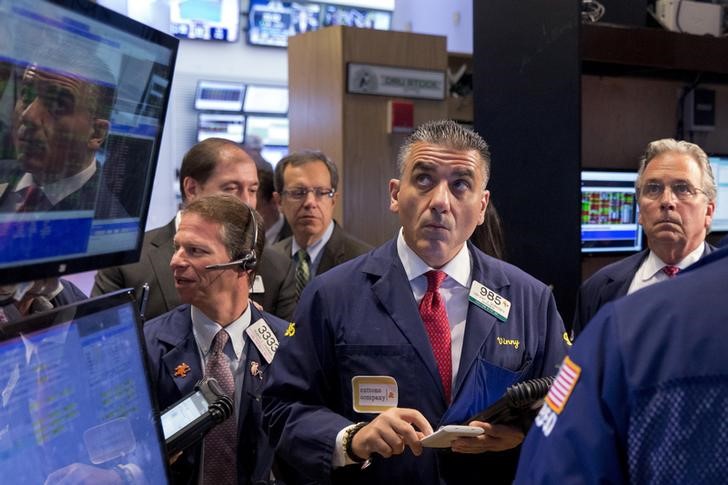By Sinead Carew
(Reuters) - U.S. stocks fell in a choppy session on Tuesday as lower oil prices pressured energy stocks for a fifth day and weak Chinese trade data reignited fears of a global slowdown.
Crude prices hovered near 7-year lows after U.S. crude dipped below $37 per barrel and Brent fell below $40 for the first time since early 2009 on fears that global oil producers will pump even more crude in a saturated market.
Data released overnight showed China's imports fell for the 13th consecutive month, with an 8.7 percent decline in November compared with a year earlier.
The China data added pressure to the energy and materials sectors as it sparked fears about a global recession and demand worries for commodities.
"The sustained U.S. crude price below $40 is a bit of a shock to investors," said Tim Ghriskey, chief investment officer of Solaris Group in Bedford Hills, New York. "China has been for some time the buyer at the margin. Traditionally they would come in when prices were down and buy inventory very shrewdly."
The Dow Jones industrial average (DJI) fell 162.51 points, or 0.92 percent, to 17,568, the S&P 500 (SPX) lost 13.48 points, or 0.65 percent, to 2,063.59 and the Nasdaq Composite (IXIC) dropped 3.57 points, or 0.07 percent, to 5,098.24.
The Dow Jones Transport Average index (DJT) fell 2.8 percent, its biggest one-day percentage decline since Aug. 24, in another sign investors are anxious about economic growth prospects, said Peter Cardillo, chief market economist at First Standard Financial, in New York.
Oil major Exxon (N:XOM), fell 2.8 percent and was the biggest drag on the S&P. The S&P energy sector <.SPNY> fell 1.5 percent in its fifth straight day of declines and has fallen 10.4 percent since Dec. 1.
Some investors expect oil soon to bounce back and reverse broader market sentiment.
"I suspect we could be in for a nice rally in spite of the fact the Fed is likely to raise interest rates next week," Cardillo said.
The U.S. Federal Reserve had cited macroeconomic uncertainty in its decision to hold rates steady at its September meeting. But most analysts think it will go ahead with a rate hike at its meeting on Dec. 15-16.
Nine of 10 major S&P 500 sectors fell, with a 1.9 percent fall in the raw materials index <.SPLRCM> leading the decline. The S&P's health sector <.SPXHC> was the sole gainer, with a 0.2 percent increase for the day.
Declining issues outnumbered advancing ones on the NYSE by 2,078 to 1,014, for a 2.05-to-1 ratio on the downside; on the Nasdaq, 1,678 issues fell and 1,130 advanced for a 1.48-to-1 ratio favoring decliners.
The S&P 500 posted eight new 52-week highs and 34 new lows; the Nasdaq recorded 26 new highs and 180 new lows.

More than 7.5 billion shares changes hands on U.S. exchanges, compared with the 6.87 billion average for the last 20 sessions, according to Thomson Reuters data.